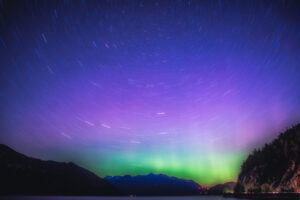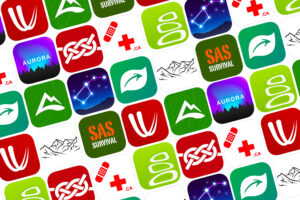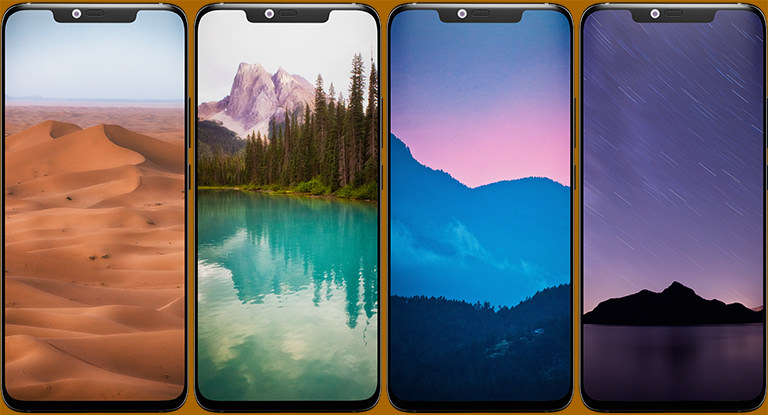Time in nature is healing, soothing, and restorative, with proven connections to positive mood and psychological wellbeing, but it is also dangerous and the risks should never be underestimated. No one leaves home on a hiking or backpacking trip ever expecting to get into trouble, but if you do, gear from each of these 10 Essentials and a simple Trip Plan form will help you survive on the trail.
I keep my 10 Essentials in this small mesh bag so I can quickly grab it and go. Even if I’m just doing a short day hike away from my tent or taking photos around camp, I’ll pop it into my daypack to ensure it’s always with me. No excuses.
The 10 Essentials
The 10 Essentials are 10 categories of items originally identified by Seattle-based organisation The Mountaineers in their courses in the 1930s and first printed in their guide Mountaineering: The Freedom of the Hills in 1974. Packing items from each of these categories will increase your chance of safe travel in the backcountry.
A few years ago, I got together with some members of one of my local hiking groups, the BC Mountaineering Club (BCMC). We took nothing but our 10 Essentials and spent a rainy day and evening in the snowy woods near Squamish, BC, to get a sense of which gear worked and which items, if any, we would want to swap out should we truly be in trouble one day.
What an incredibly valuable experience. Not only did it teach me to properly use the emergency gear I carry, but it prompted me to make some important changes. If I’m particularly passionate about a specific piece of gear (brand, model, etc.), I’ve provided you with a link to the actual product that I use and love. Some of these are affiliate links, which means I may earn a small commission at no extra cost to you. In any event, know that I’ve personally purchased and tested each of these items and that my passion for them is real.
Download a PDF of my Ultimate Backpacking Checklist (or my Ultimate Day Hike Checklist), which includes my list of 10 Essentials.
Of course, this list assumes you are already wearing appropriate footwear. Runners may be fine for camp, but they have no place on a trail! To protect yourself from slips and ankle sprains, ensure you’re wearing a good pair of hiking boots that provide adequate traction, support, and protection.
1 NAVIGATION – Compass, topo map, standalone GPS, smartphone
There are well over 500 trails in Southwestern BC and understandably, not all are well marked. My smartphone is an incredibly powerful tool to keep me on the trail with its GPS (Global Positioning System) abilities and the multitude of available trail map apps, but phones aren’t always reliable in the backcountry. Even when they are, I may need that precious battery power to get help if I ever find myself in trouble, so I use my smartphone’s location services sparingly. Even if a trail is well marked and I have a working smartphone, nothing beats a traditional compass and paper map, and the knowledge to use them.2 NUTRITION – Extra food per person
When we get tired and hungry, we make mistakes. A mistake on a trail can have dire consequences. I always take a few extra energy bars with me on a day hike and an extra day of food per person on an overnight trip, plus a roll of energy chews. Just in case.3 HYDRATION – Extra water, emergency water filter & backup tablets
It’s important to remember that we need about 1L of water for every 2 hours of hiking in normal conditions. If I’m going for an 8-hour hike, that means I would then need to carry 4L of water (per person) to stay adequately hydrated. If I get into trouble, I’ll need more. Fluid depletion can lead to heat exhaustion and/or hypothermia. I always carry an emergency water filter and some backup purification tablets so I’ll be able to stay hydrated from the many streams found on most trails in Southwestern BC. I particularly love my Katadyn BeFree Microfilter because I can squeeze the soft flexible bottle to spray out clean, filtered water. Particularly helpful if you need to wash out a wound. It’s also great to carry electrolyte tablets to replenish salt and potassium that are depleted during excessive exercise.
4 SUN PROTECTION – Sunscreen, sunhat or buff & sunglasses
It’s always important to protect ourselves from the sun to prevent heat exhaustion, dehydration and sunburn. Southwestern BC summers can be gloriously sunny, but sun protection is also important in winter, especially with the intense reflections from our gorgeous snowy peaks. I always carry a small bottle of unscented sunscreen, a sunhat/buff and a pair of sunglasses.
5 INSULATION – Warm layers of extra clothing, toque & gloves
The weather in Southwestern BC can change quickly and unpredictably. Cotton is terrible in the woods. Especially the wet woods. For insulation, I wear a wicking material such as polypropylene or wool, which stays warm when it’s wet. If I stop for a rest break, I pull on a layer to keep my temperature up. When I’m too warm on the trail, I take a layer off to prevent overheating and sweating. As most heat is lost from our heads, a toque does wonders in keeping us warm and those gloves will keep our hands from getting too cold to tie paracord or start a fire. Even if I’m only going for a short hike, I always make sure to bring an extra layer. It’s the only essential that I don’t carry in my mesh bag but pop straight in my pack.
6 ILLUMINATION – Headlamp
Sometimes we underestimate the time it will take to complete a trail. Sometimes we stare at that gorgeous view at the top just a little too long. Most of the overdue hiker calls to North Shore Rescue result from lack of light. A simple headlamp helps us stay on the trail if we’ve underestimated the distance of the trail or the amount of daylight left in the day. If I’m ever in an emergency, I would not want to use my smartphone’s flashlight as I’ll likely need every last joule of battery power available for other uses like communicating with 911 dispatch and Search and Rescue (SAR) personnel, so I always make sure to pack a headlamp.
7 COMMUNICATION – Smartphone, sat phone, signal mirror, RECCO reflector & whistle
A smartphone is not a toy. In an emergency, it’s a critical communication device so I try to keep it charged and use it extraordinarily sparingly. If I know I’m hiking in an area without cell reception like the West Coast Trail, I carry my Garmin InReach Mini sat phone as well.
Most rescues in the mountainous terrain of Southwestern BC are first conducted by air, so having a signal mirror is an excellent way to make contact. In addition to reflecting light with my mirror, I’m also able to reflect sound with a Recco reflector. The use of Recco SAR helicopter detectors has its roots in avalanche rescue but are now widespread throughout Southwestern BC for finding lost hikers as well. The Recco detectors transmit electromagnetic signals that are reflected back as pulses of sound from a piece of clothing or gear equipped with a Recco reflector. Lots of outdoor gear now have Recco reflectors sewn right into them, but I also use a stand-alone Recco reflector that I switch between backpacks so I know I always have at least one on me at all times.
Once help is near, a whistle is an excellent communication tool as it’s much easier to blow a whistle than to call for help, especially when dehydrated, so I always have one on my pack.
8 FIRST AID – Personal first aid kit
I’m sure you have a first aid kit in your home. Make sure you also carry one on the trail. And make sure you take the time to learn how to use it. Take a class to gain the skills needed to administer first aid and CPR and keep a digital manual on your smartphone for emergencies. It’s worth it. My first aid kit includes protective gloves, bandages, gauze, blister dressings, antiseptic wipes, a pocket mask and a SAM splint. I also like to include a tick remover, folding scissors, a non-drowsy antihistamine to treat allergic reactions, and Naproxen to treat pain and inflammation.
9 FIRE STARTER – Lighter, waterproof matches, knife with ferro rod, chemical tinder
Southwestern BC is wet and even summer nights can be cold. Knowing how to start a fire to keep warm in an emergency could save your life and increase your chance of being found. I always carry a knife with a ferro rod so I can start an emergency fire. A lighter’s great, but if you know how to use it, a ferro rod is even more reliable. It never runs out of fuel and is still useable even if submerged in snow or water. My Mora Companion Knife (previously called Light My Fire) is amazing because it comes with an integrated ferro rod and its substantial size is invaluable for preparing fuel. I also always make sure to pack some Vaseline-dipped cotton balls (in a little Ziplock bag) and some SOL Tinder Quik™ (or WetFire™) chemical tinder.
10 SHELTER – Emergency reflective bivvy bag and tarp
A simple emergency blanket is amazingly light and heat reflective and will go a long way in keeping us warm and dry for only a few bucks. For only a little bit more, I prefer the SOL Emergency Bivvy Sack as the bag design keeps me even warmer and the orange colour is highly visible to help attract attention, especially from the air. When I’m hiking without a tent, I also like to add a lightweight tarp and some paracord to my 10 Essentials for emergency shelter.
My Lifesaving Trip Plan Form
For years, the road up to Vancouver’s Cypress Mountain has had a great sign saying, “If you get lost today, will anyone know? Are you prepared?” I’ve always found this sign to be such a great reminder and I wonder how many people it has prompted to call a friend at the last minute and advise of their plans. If no one knows you’re missing, no one will be looking for you. These days, I would never head out on a hiking or backpacking trip, no matter how long or short, without first filing a written trip plan with a friend.
A trip plan provides crucial details of you, your route, and your preparedness. If you do find yourself in trouble on a hiking or backpacking trip, a trip plan will greatly improve your odds of being found. I use it even if I’m only going for a short hike on a local trail. I simply email it to a friend of mine and confirm by text that she’s available to pass it on should we not return when expected. That’s it. A single email and text that could most definitely save my life. Download a fillable PDF of my Trip Plan form.
AdventureSmart is a national prevention program targeting outdoor adventurers to reduce the number and severity of Search and Rescue incidents in Canada. It’s an amazing resource with an awesome free trip planning app (iOS/Android/web) to help you create trip plans and send them to your friends and family. After answering a few questions, the app lets you save, print (to give to a trusted friend yourself) or activate your trip plan (which will automatically provide it to the contacts you have entered).
Whether you use my Trip Plan Form or the AdventureSmart app, never ever head out on an outdoor adventure without filling one out and providing it to someone you trust. And if one day, you forget and are heading out on a quick hike, think of the sign on Cypress Mountain and please phone a friend anyway. Just in case.




